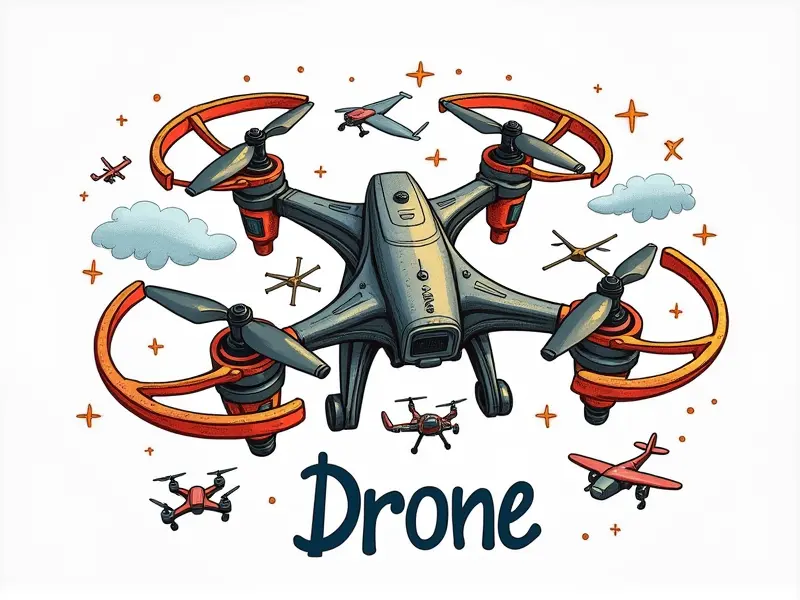Drift in drone flight path

Mastering Drift Techniques in Drone Racing
Drone racing has become a thrilling and competitive sport, with pilots pushing the boundaries of what is possible with their drones. One critical aspect that can make or break a race is mastering drift techniques. Drift refers to the lateral movement of a drone during high-speed turns, which can be both an advantage and a challenge.
To effectively use drift in racing, you need to understand how it affects your flight path and learn advanced control methods. By practicing precision maneuvers and fine-tuning your throttle and yaw inputs, you can enhance your ability to navigate tight corners with speed and agility. This section will delve into the nuances of drift techniques for drone racers.
Tips for Reducing Drift in FPV Racing Drones
FPV (First-Person View) racing drones are designed for high-speed, aerobatic flight, but excessive drift can hinder performance. To minimize drift and maintain optimal control, consider the following tips:
- Balanced Propellers: Ensure that all propellers are perfectly balanced to reduce unwanted vibrations.
- Tuned ESCs (Electronic Speed Controllers): Properly tune your ESCs for smooth throttle response and reduced lag.
- Aerodynamic Design: Optimize the aerodynamics of your drone by reducing drag and improving airflow.
- Precision Control Inputs: Practice smooth, precise control inputs to maintain stability during high-speed turns.
Understanding and Minimizing Drift in RC Quadcopters
RC quadcopters are versatile platforms for both racing and aerial photography. However, drift can significantly impact their performance. To understand and minimize drift:
- Analyze Flight Data: Use flight data analysis tools to identify patterns of drift and adjust settings accordingly.
- Battery Management: Ensure that your battery is fully charged and provides consistent power throughout the flight.
- Propeller Pitch Adjustment: Adjust propeller pitch for better lift and reduced drift in windy conditions.
Optimize Your Helicopter's Performance with Drift Control
Helicopters, especially RC models, require precise control to maintain stability. Drift can cause instability during maneuvers, but there are ways to optimize performance:
- Yaw Adjustment: Fine-tune the yaw settings for better alignment and reduced drift.
- Pitch Control: Adjust pitch angles to minimize lateral movement during flight.
- Gyro Sensitivity: Calibrate gyro sensitivity to ensure smooth, stable performance in all conditions.
Advanced Techniques to Counteract Drift in Airplanes
Airplanes are particularly susceptible to drift due to their aerodynamic design. Advanced techniques can help counteract this issue:
- Balanced Wing Design: Ensure that the wing is balanced for optimal lift and reduced drag.
- Rudder Control: Use rudder inputs effectively to maintain straight flight paths during turns.
- Aileron Adjustment: Fine-tune ailerons for better roll control and stability.
The Impact of Wind on Drone Flight Path Drift
Wind is one of the most significant external factors affecting drone flight. Understanding how wind impacts your drone's performance can help you mitigate drift:
- Wind Direction and Speed: Analyze wind conditions before flying to plan your route accordingly.
- Drafting Techniques: Use drafting techniques to reduce the impact of headwinds on flight stability.
- Flight Path Planning: Plan your flight path to avoid areas with strong winds or turbulence.
Precision Flying: Overcoming Drift Challenges
Maintaining precision during high-speed maneuvers is crucial for both racing and photography. Here are some strategies to overcome drift challenges:
- Practice Precision Maneuvers: Regularly practice tight turns, loops, and other precise maneuvers.
- Adjust Control Settings: Fine-tune your control settings for better responsiveness and stability.
- Use Flight Assist Tools: Employ flight assist tools like GPS locks to maintain stable flight paths.
Tips for Smooth Drifts in RC Quadcopters
To achieve smooth drifts, follow these tips specifically tailored for quadcopters:
- Smooth Control Inputs: Practice smooth and consistent control inputs to maintain stability.
- Battery Management: Ensure that your battery is optimized for high-speed performance without overheating.
- Aerodynamic Adjustments: Make aerodynamic adjustments to reduce drag and improve maneuverability.
Enhance Airplane Stability: Tackling Drift Issues
To enhance the stability of your airplane, consider these strategies:
- Balanced Wing Design: Ensure that the wing is balanced for optimal lift and reduced drag.
- Rudder Control: Use rudder inputs effectively to maintain straight flight paths during turns.
- Aileron Adjustment: Fine-tune ailerons for better roll control and stability.
Advanced Drifting Techniques for RC Helicopters
Mastery of advanced drifting techniques can elevate your helicopter flying skills. Here are some tips:
- Balanced Gyro Settings: Calibrate gyro settings to ensure smooth and stable performance.
- Precision Control Inputs: Practice precise control inputs for better stability during maneuvers.
- Aerodynamic Design: Optimize aerodynamics to reduce drag and improve maneuverability.
Drift Control Basics for Beginners in Drone Flying
If you're new to drone flying, understanding drift control is essential. Start with these basics:
- Understand Flight Dynamics: Learn the basic principles of flight dynamics and how they affect your drone.
- Balanced Control Inputs: Practice balanced control inputs to maintain stability during maneuvers.
- Flight Simulation: Use flight simulators to practice drift control in a safe environment before flying real drones.
Conclusion
Mastery of drift techniques is crucial for enhancing performance and safety in various types of drone flights. Whether you're racing FPV drones, piloting RC quadcopters, or maneuvering helicopters and airplanes, understanding and minimizing drift can significantly improve your flying skills. By following the tips and strategies outlined above, you'll be better equipped to handle a variety of flight conditions and challenges.

